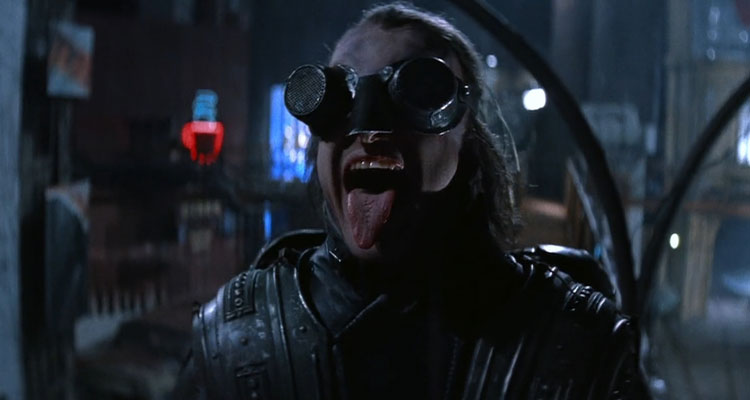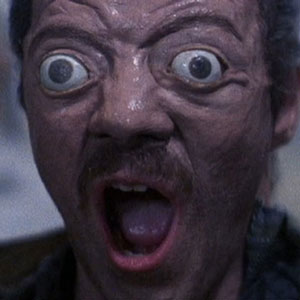The best thing about Highlander II: The Quickening from 1991 is that it’s consistently crazy. From the opening scene to the end credits you’ll be witnessing something that can only be described as unhinged madness. Unhinged madness that’s extremely entertaining and cheesy. It’s got everything that you would want from a nineties action science-fiction movie apart from cocaine. On the other hand, cocaine did play a part in the production, but more about that later. Full of contradictions, weird stylistic choices, and preposterous characters, it’s gloriously bad and considered one of the worst movies ever.
The general consensus is that it plays and feels like something that’s written by a 13-year-old boy. Well, I would say that it has a very specific, niche market, but that’s just me. And while we’re here, yes, I loved when it first came out mostly because I was the right age. I also loved it in all subsequent viewings, probably reminiscing about my past but mostly because it’s just so damn crazy.
We will go over everything that went wrong with this movie. From the very origins over botched production to the end result hated by everyone. The latter Highlander movies don’t acknowledge its existence and most of the cast call it the worse movie they ever worked on. Is it really that bad? Or is this just a case of a lot of odd coincidences? Like the fact that The Quickening is usually referred to as the moment during pregnancy when the baby starts kicking. Well, this baby has some kicking to do.
Why Make a Sequel in the First Place
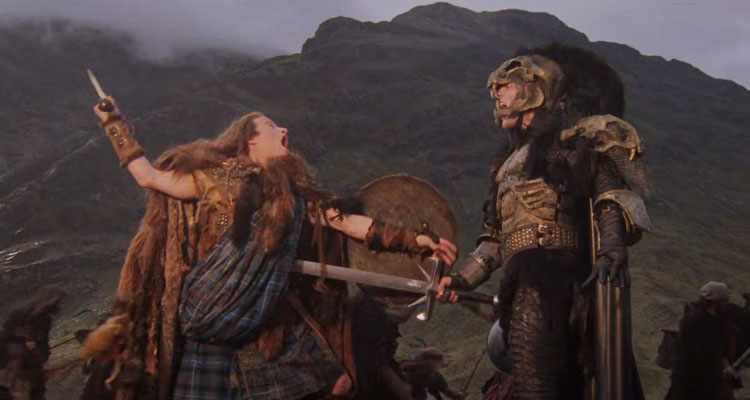
Everybody agrees that the original Highlander is a great movie. This includes Lambert, producers, director, and everybody else involved in both movies. After a horrible run in US theaters, it did a lot better in Europe. However, after it hit the video stores, the VHS copies of the movie were flying off shelves. This meant that any sequel would probably do just as well, released in a time when there was no Internet. The producers were squeamish about the possibility of the second movie. They didn’t want to make a sequel just because the first part made a lot of money. Or at least that’s what they said in interviews.
They wanted a great story, a story that would blow them away. And they got one. It tackles both the environmental and corporate issues, presenting a bleak vision of the future. A cautionary tale for all of those who are willing to listen and take action before it’s too late. You have to remember that these are the early nineties and late eighties, a time when the ozone layer was the main topic. According to William Panzer, the producer of the movie, we’re talking about a movie that’s both a sequel and a stand-alone movie.
I know that this concept is hard to comprehend, once you check out this monstrosity, you’ll see that he’s right. However, they were also happy about the fact that the ending is open to another sequel. Lambert and Connery became really good friends while shooting the original movie so they were happy to reprise their roles. Plus, their fees were quite hefty. For example, Sean Connery’s paycheck was $3.5 million for nine days of work. He donated the sum to the charities after the shoot was over. It would seem that everybody was in it for the money and to spend some time in Argentina.
Tango, the Dance of Love

With everything in motion, it was time to settle on the filming location. Director Russell Mulcahy chose Argentina because it had the futurist and apocalyptic style he wants to show. He wanted to make a movie with a unique visual style and imposing locations. This move also made sense from a financial side. The production would be much cheaper, hiring local artists and fast-tracking permits. The places we will be visiting in Highlander II: The Quickening are truly unique. One of them is a strange-looking building with all these vertical pipes everywhere. It was a real and working waterworks up until a few years ago. Built in 1910, it was transported from Scotland no less and assembled in Buenos Aires.
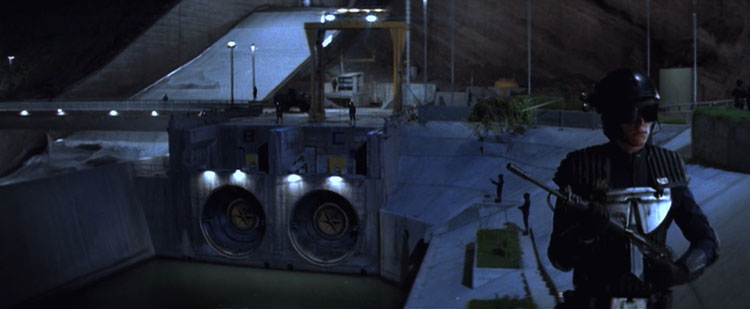
And I’m sure you all remember the huge dam that was an integral part of the plot. Again, this was a working dam that the production was granted total access to. They could turn off and on the water as they pleased, getting exactly the shots they wanted. Although if we’re talking about locations, the one that stuck in my memory the most was the huge set with the train running in the middle of it. This was a real fucking train and the set was the size of three football fields. Lambert recalls it feeling like a small village.
The studio in Buenos Aires, where they filmed most of the indoor scenes, cost just $300,000. The fee was agreed upon by the producers and the Argentinian government. Finally, this exotic, South American country played a crucial role for a lot of the cast. They saw the production as their opportunity to chill out and relax on the beautiful beaches, lavish nightclubs and make a movie along the way. Virginia Madsen lists Argentina and the chance to work with Sir Sean Connery as two main reasons why she took the role.
Tango, the Dance of Death
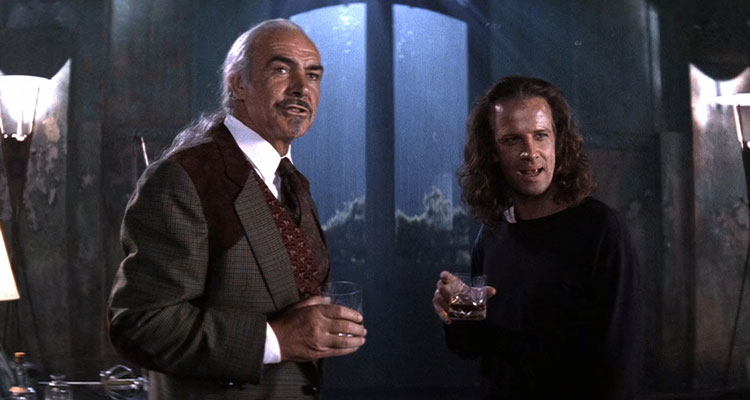
In reality, the troubles with the production of the movie started almost immediately with the labor unions filing numerous lawsuits. And while most of the local artists were quite good, providing excellent quality of work, some of them were quite bad. This meant that the industry professionals from the States had to be found, hired, and flown in. However, the biggest problem by far was hyperinflation. Just one year prior, the whole country was exploding with riots and rampant hyperinflation. The original budget for the movie was $14 million and by the end of production, that figure rose to $34 million.
Remember that studio in Buenos Aires they got really cheap? Well, the Argentinian government told the production they went over the budget and the price for the studio went up from $300.000 to $10 million. The Argentinian Central bank stepped in and loaned the money in exchange for part of the film’s profits. Suffice to say they didn’t get their money back. Christopher Lambert also didn’t get his money back after some fake businessmen convinced him to invest in financial management scheme.
Connery faired much better after he gave up on buying a mansion here. It turned out that the price was extremely overblown as a part of a scheme to con him. The filming of this movie was a big deal in Argentina and all kinds of shady characters saw it as their opportunity to get rich quickly. After all, even the president Carlos Saúl Menem met up with the crew and actually made a brief appearance in the freaking movie.
A Very Dangerous Production Indeed
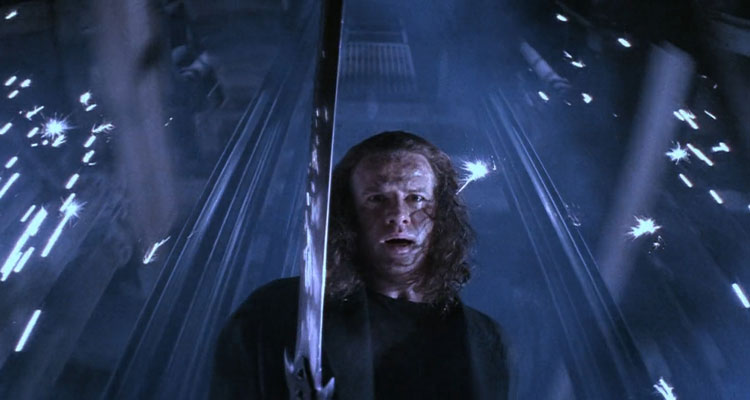
What do you say to Christopher Lambert who keeps insisting they use real fucking swords in fights despite that being incredibly dangerous? Pretty much nothing and let him discover how’s that going to go in reality. Something like this: Michael Ironside almost cut off his finger during one of the first sword fights. He said that precision thrusts and parries were impossible when wielding a twenty-two-pound broadsword. Something no one would imagine happening. I should probably add that the broadsword also extends at a click of a button.
Then Lambert chipped one of Ironside’s teeth and nearly cut off his finger. He also dislocated his jaw during the Dome fight. Ironside in a true nineties manner asks Lambert to snap it back in place by hitting him hard. He managed to do so but the horrible sound this made stuck with director Russell Mulcahy for a long time. This finally made them switch to using prop swords. However, this is not the craziest stunt in the movie. Just pay close attention to the scene where Lambert is standing on top of the elevator as it’s falling down the building. And yes, that’s him alright, same as it was him in the hoverboard scenes.
Ironside also did most of his stunts, including the one where he crashes into the subway car. Stunt double who was supposed to do it got addicted to cocaine and had to be replaced. When in South America… Speaking of that, Lambert was a frequent guest of night clubs leaving him hungover and unable to shoot during the day. Both he and Connery had many affairs while in Argentina, as Diego Curubeto explains in his book “Babilonia Gaucha“.
Unique Visual Style
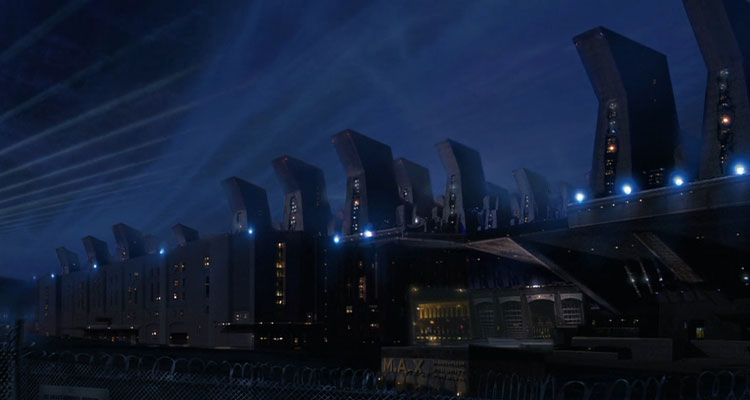
Often compared to Blade Runner, Highlander II: The Quickening offers a desolate and gloomy vision of the future. And when I say future, I mean near future as the story unfolds in the year of our lord Katana 2024. With the sun blotted out and extreme poverty everywhere, we’re plunged into this dark and desperate world. This is only amplified with most of the scenes taking place during the night. Apart from Blade Runner we also have strong Dune and especially RoboCop influences. The whole evil corporation vibe was lifted from that particular eighties classic.
However, I think that Tim Burton’s Batman that came out just one year earlier made the biggest impact. I still don’t know whether this was intentional or it accidentally happened during the production. This dark city, full of crime and corruption with one man trying to fix it sounds too familiar. The action sequences, especially the first few (hoverboards, dam infiltration) look and feel like they’re happening in Gotham city.
Opposite of all this gloominess we have the planet Zeist. I know, I know, I also chuckle every time I remember the actual plot of the movie. This alien world looks really good and convincing despite the use of matte paintings. If anything it proves that some of these old-school techniques are still very effective. And when I say old-school, I really mean it because it has been around since the 1930s. Latent image matte painting is incredibly time-consuming and complex technique finally made obsolete by CGI in the past thirty years.
Plan MacLeod from Outer Space
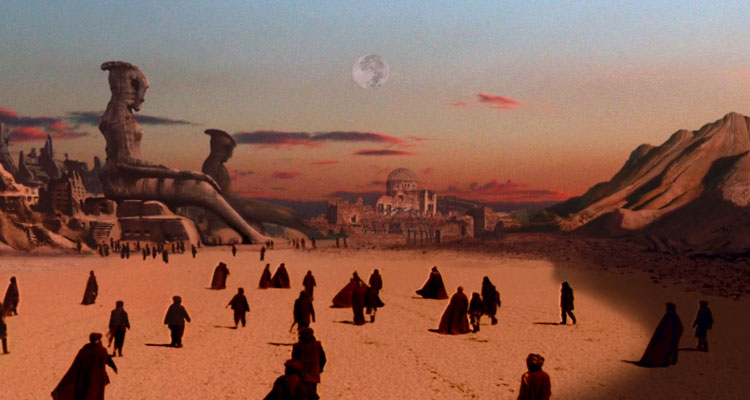
So, all the elements for this movie to be a complete clusterfuck are already here. We have Sean and Lambert out partying, troubles with labor unions, corrupt government officials, and finally the fucking hyperinflation. All this is slowly making the producers, investors, and insurers nervous. Like really freaking nervous. I don’t know why they weren’t nervous when they read the script. It was just so painfully and obviously bad that someone had to pull a plug on this one much earlier.
I mean, everybody hated the script. And this is not me saying it, it’s Michael Ironside recalling his experiences with the movie:
Yeah, listen, I hated that script. We all did. Me, Sean, Chris, we all were in it for the money on this one. I mean, it read as if it had been written by a thirteen-year-old boy. But I’d never played a barbarian swordsman before, and this was my first big evil mastermind-type. I figured if I was going to do this stupid movie, I might as well have fun, and go as far over the top as I possibly could. All that eye-rolling and foaming at the mouth was me deciding that if I was going to be in a piece of shit, like that movie, I was going to be the most memorable fucking thing in it, and I think I succeeded.
Michael Ironside on shooting Highlander II: The Quickening
And succeeded he did and I still remember his performance here. He’s not the only one who went over the top. John C. McGinley made his character’s voice as deep as possible in an effort to imitate Orson Welles. Well hey, at least they had fun making the movie.
The Shit Hits The Fan
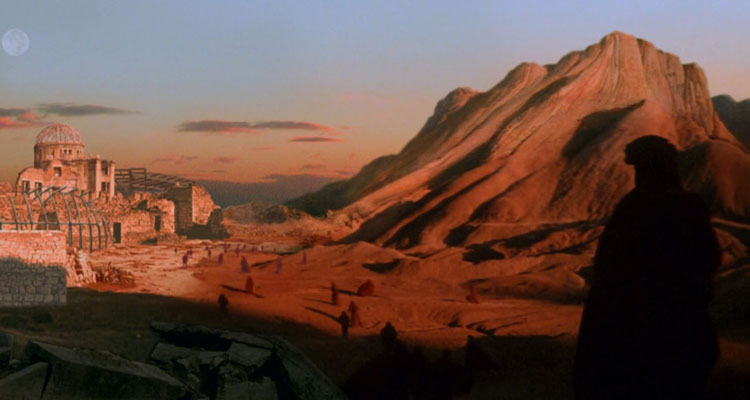
And no, this is not the description of the night when fans of the original movie saw the sequel for the first time. This is a story about how supposedly we ended up with such a bad movie. Basically, director Russell Mulcahy says that the insurance company took over the creative control at some point during the filming and the whole thing went downhill from there. They were trying to make the movie that would make the most money and this had disastrous results.
However, the city of Zeist is in the original script so I don’t see how they’re responsible for at least that huge aspect. I’m sure that the company InterStar Releasing Corporation had the best intentions but they had no idea how to make a good movie. What I think actually happened is that after the negative reaction from both the viewers and the critics, someone had to be blamed. It takes just fifteen minutes to see that something is wrong. This is how much it took Russel Mulcahy to leave the premiere furious with the theatrical cut.
Even if everything went swimmingly with the production, Highlander II: The Quickening would still be a crazy movie. Apart from the general ideas of an evil corporation and the ozone layer, everything else just doesn’t make sense. We will go over the details in the next section although I’m sure you remember how MacLeod turned out to be an alien. Odd how this strange planet Zeist and Earth have not only a similar atmosphere but also very similar inhabitants.
Why Highlander II: The Quickening is so bad?
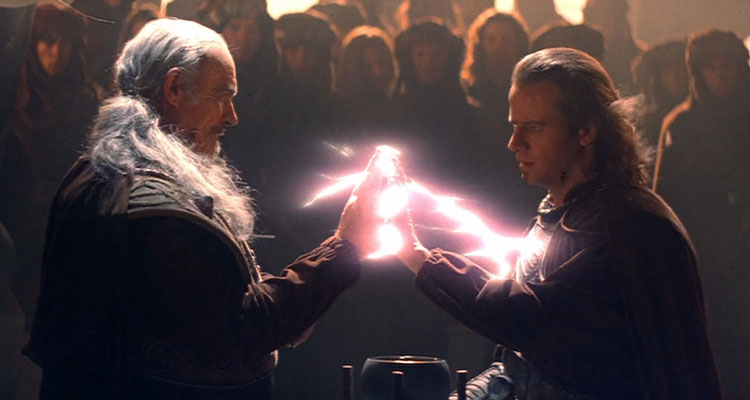
The short answer to the question of why Highlander II: The Quickening is so bad is because of its story. Everything else is pretty decent and some elements like stunts, atmosphere, and visual style are even excellent. The story is, however, a whole different story. And I mean that in the most literal sense possible as this sequel goes against everything that happened in the original Highlander. Just think of any movie you like and imagine its sequel revealing that the main characters are in fact aliens. The Shawshank Redemption 2: The Escapening finally explains that Dufresne escaped from a prison colony in the future but is now caught and must escape again.
Okay, now let me just see if I can get this straight. You come from another planet, and you’re mortal there, but you’re immortal here until you kill all the guys from there who have come here… and then you’re mortal here… unless you go back there, or some more guys from there came here, in which case you become immortal here… again.
Louise talking to MacLeod
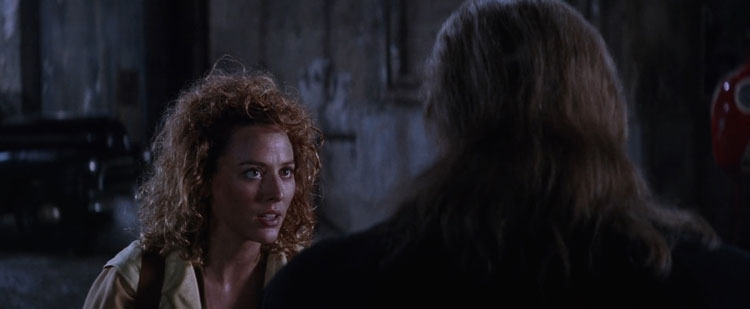
To this, MacLeod simply replies Something like that. Of course, the way they introduced and then promptly got rid of Ramirez is also hilarious in its own right. Sir Sean Connery’s onscreen time is whopping nine minutes! We can also move to the totally changed villains. From intimidating and physically imposing Kurgan we get a quirky general called Katana. Also, Katana doesn’t want to wait a few years for MacLeod to die of natural causes but decides to send two incompetent hitmen to kill him. Add a healthy dose of silly and over-the-top action and you get this mess. Not to mention that it’s taking place in the future, something that fans of the original fantasy movie also disliked.
The Four Different Cuts
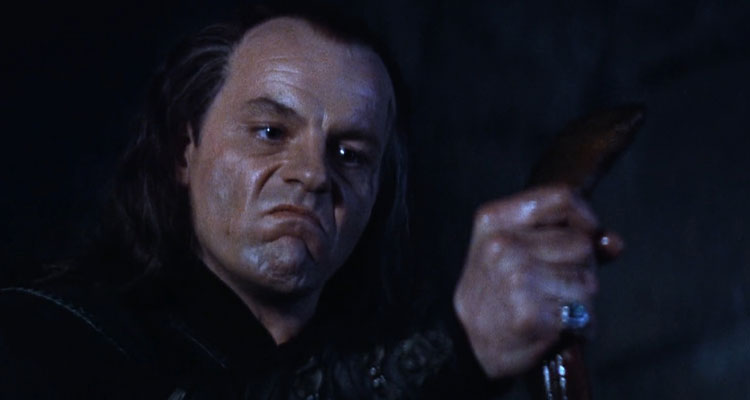
For a movie that’s so universally hated, it’s pretty odd that we got no less than four different versions of Highlander II: The Quickening. The first version is the infamous theatrical cut, shown in theaters and released on VHS tape. This is the one that the director walked out on after fifteen minutes. The second version is the British one, with the distributors in charge of this region allowing Mulcahy to make several edits. It runs ten minutes longer and contains a lot more exposition.
In 1995, Mulcahy finally got his hands on all of the material and released the so-called Renegade version. He changed a lot of stuff, removing all mentions of Zeist or the fact that the immortals are aliens. They are actually ancient beings under the command of evil General Katana. They also can be exiled to various points in time in Earth’s history explaining how they got to the future or past. A lot of continuity errors and other minor issues were also addressed. This cut is usually referred to as the one and only worth watching.
Finally, we also have the Special Edition version, released both on BluRay and DVD. It uses almost all of the material from the Renegade one with updated special effects. Depending on which edition you watch, you can see three different finales. The first one is one where MacLeod just smiles, the second one features him and Louise kissing and the third one is the one where he levitates. If I could choose which version I would wanna watch, I would choose the one with everything about Zeist and updated special effects. And here’s why.
Why I love Highlander II: The Quickening – Nostalgia part
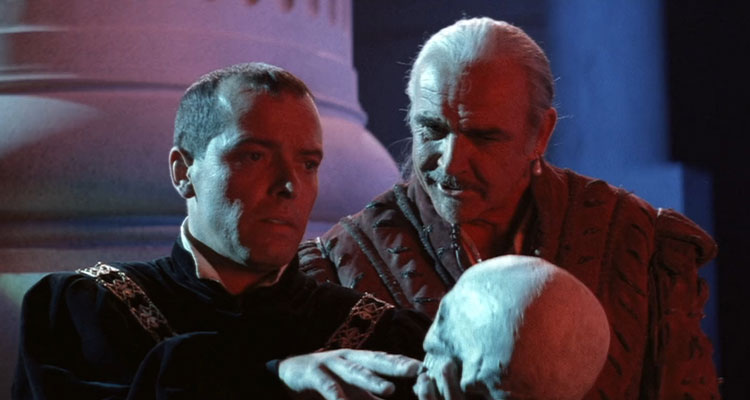
I first saw this movie several years after its release. I don’t remember it correctly, but I’m guessing this was around 1996 or 1997. Having seen the original, I was anxious to see more of the same. The Kurgan and his voice along with that rebel leather outfit made quite the impression on me. Not to mention the whole sword fights and cutting off people’s heads part. I still remember the first viewing just as it was yesterday. I remember my total excitement by the bold decision to make this a science fiction movie. A dark science fiction movie with an overwhelmingly brooding atmosphere. I remember the first two cackling idiot hitman and their distinctive hair. I remember it all Gandalf.
For a young science fiction fan who was just figuring out what he likes and dislikes, Highlander II: The Quickening contained a lot of great elements. The concepts of the shield protecting us, immortal life, and a fight against the system are all powerful themes. Also, MacLeod is now an old man, facing death the same as the rest of us, breaking this magic that existed in the original. It also forced me to realize that I’m going to that old guy in the end. And on top of it all, the action was just so juicy. That incredibly over-the-top train sequence was pure fun and excitement. And who then makes a sudden appearance?
None other than Juan Sánchez Villa-Lobos Ramírez! I don’t care how or why, the important thing is that he’s here. And what an entrance that was. Alas, poor Yorick, I knew him well… The issue of mortality is probably the most important concept in every human’s life. We start dying the minute we’re born and there’s nothing to do to stop it. And not only you will die but also everyone around you. I think that the original Highlander toyed with this fantasy of immortality in quite a smart way. The return of Ramirez and his voice at the end symbolizes immortality. Something like the Force in the Star Wars universe.
Why I still love Highlander II: The Quickening – 2021 part
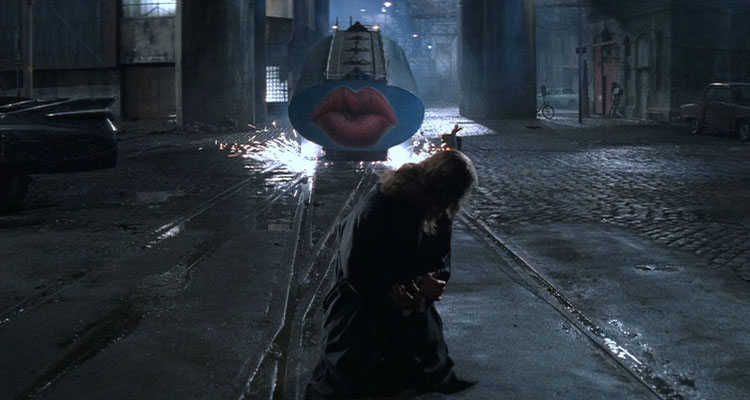
After many years, I decided to check out this movie once again. Mostly because I wanted to see if I missed something the first couple of times. The first thing that hit me was the scene that everybody agrees is probably the best one in the movie. The famous opera house one with an elderly MacLeod reminiscing about his past life. The imposing sets are still imposing and the brooding atmosphere is just as ominous and depressive as it was the first time. There are just hints that this might be a weird one with all the tarps and buckets for leaks. The stage is set with our apparently immortal hero facing old age and ultimately death just like the rest of us.
On the other hand, once the cackling idiots show up, this totally serious, almost drama turns into hilarious science fiction. In just a few scenes we have both the decapitation by train and a loose tanker trailer heading for MacLeod with giant lips decal. All this sets the stage for the magnificent finale and memorable finale. MacLeod minutes after meeting some girl who claims to be the leader of the resistance proceeds to have sex with her in the middle of the street. Okay, not in the middle, up against the wall, but you get my point. How can you not love a movie this oblivious and I’ll say it, bold?
From the trains reaching speeds of over 600 mph to epic fights on Zeist, it all seems surreal and ridiculous. I mean, that fight alone with people armed with swords fighting against laser rifles is just plain dumb. What is this Warhammer 40k? At least they went about it the right way, with an air of coolness around the whole thing. Same as they did here in the scene where the two of them drive through the hail of bullets and then wake in the morgue. That’s a good way to infiltrate a facility, I’ll tell you that!
The Cast of Highlander II: The Quickening

We’ll start with Christopher Lambert, who was a relatively unknown French actor until he became Connor MacLeod in the 1986 hit. Shot several years after the original, this sequel established him in Hollywood as the man who can move your B movie off the video store shelves. He went on to star in such nineties classics as Fortress, Nirvana and Beowulf. As a smooth and charming actor who isn’t afraid to get his hands dirty, he played all these roles with dedication and necessary style. Poor Virginia Madsen wasn’t given much to work with here, but she did her absolute best as the resistance leader.
The same cannot be said for Sir Sean Connery, a legend at the time of the filming. His role was written with him specifically in mind and it shows. From the opening scene over those snappy remarks in the airplane to his final scene, he played them all with charisma and confidence. I really don’t know much more actors who would be able to pull off that last scene with the giant fan coming down on them. He made it seem somehow believable, especially when you consider that is his last line:
Most people have a full measure of life… and most people just watch it slowly drip away. But if you can summon it all up… at one time… in one place… you can accomplish something… glorious.
Juan Sánchez Villa-Lobos Ramírez in Highlander II: The Quickening
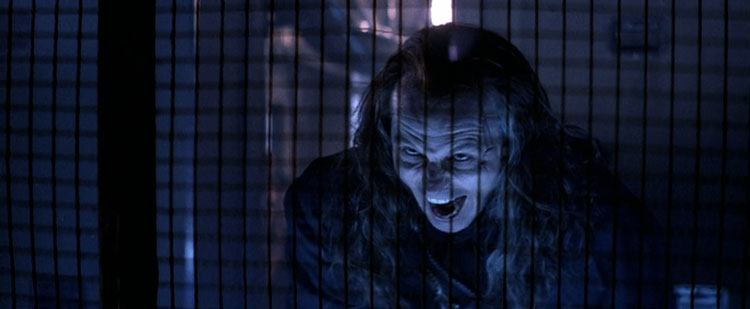
While the original movie gave us unforgettable Kurgan, the sequel offers an opportunity to meet Katana, an epitome of the nineties boss. I see him as this totally chaotic element that plays off of that whole Wall Street cocaine vibe from the nineties. Probably because most of the bosses were like him, minus the killing. He also reminds me of Vigo from Ghostbusters. Michael Ironside as Katana was the completely unpredictable bad guy in this movie. As we already talked about, this was intentional and all I can do is applaud it. And recommend you another one of his nineties science fiction movies Neon City. There he plays a good guy for a change.
The Aftermath
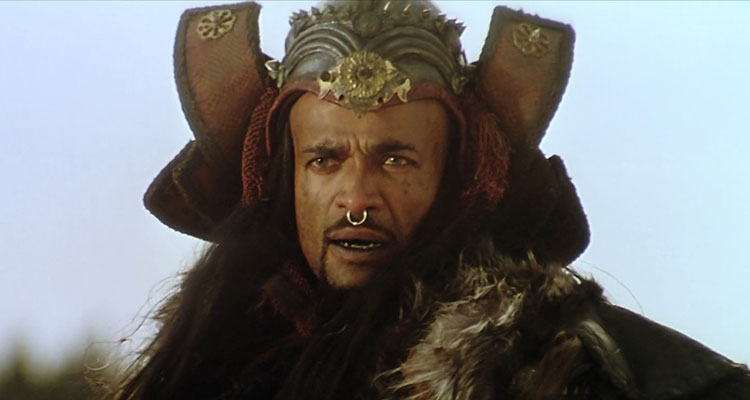
After all this drama, the fact remains that Highlander II: The Quickening is undoubtedly a highly successful movie. I’m sure that the people are still buying the BluRays, chasing different copies, and arguing about it online. No one thought this would be the case when the movie first hit the theaters. And that was after a huge marketing campaign that cost $4.4 million. Still believing in the franchise, producers Peter S. Davis and William N. Panzer wanted to make a television series. Lambert was aware of this and put them in touch with Gaumont’s president Christian Charret during the Canne film festival in 1991.
The three of them hit it off and Gaumont, persuaded by the popularity of the two existing movies, bought off the publishing rights. Of course, the tv show picks up the story right after the end of the first movie, completely disregarding the sequel. Lambert was in the pilot and received half a million for three days of filming. The series was an international hit and won several awards. Highlander: The Animated Series was subsequently released along with short-lived Highlander: The Raven, with a female immortal in a lead role.
So after this horrible sequel, we got exactly three more. All of them are pretty decent but, in my humble opinion, nowhere near The Quickening and let alone original. The third part is probably the best one, with some cool special effects for that time. Finally, there are talks about the reboot of the franchise with Henry Cavill starring as Connor MacLeod. But, as we all know, there can be only one!

